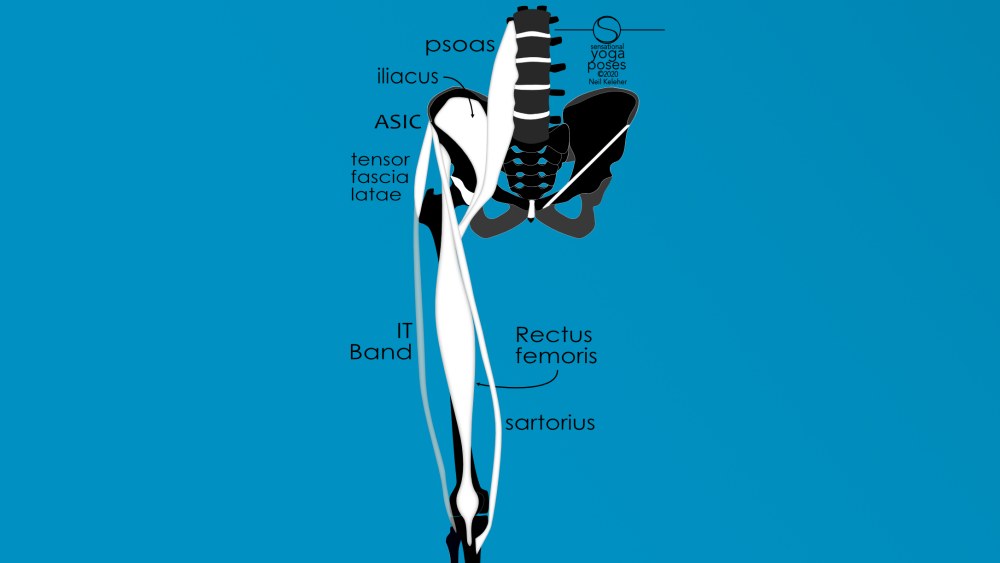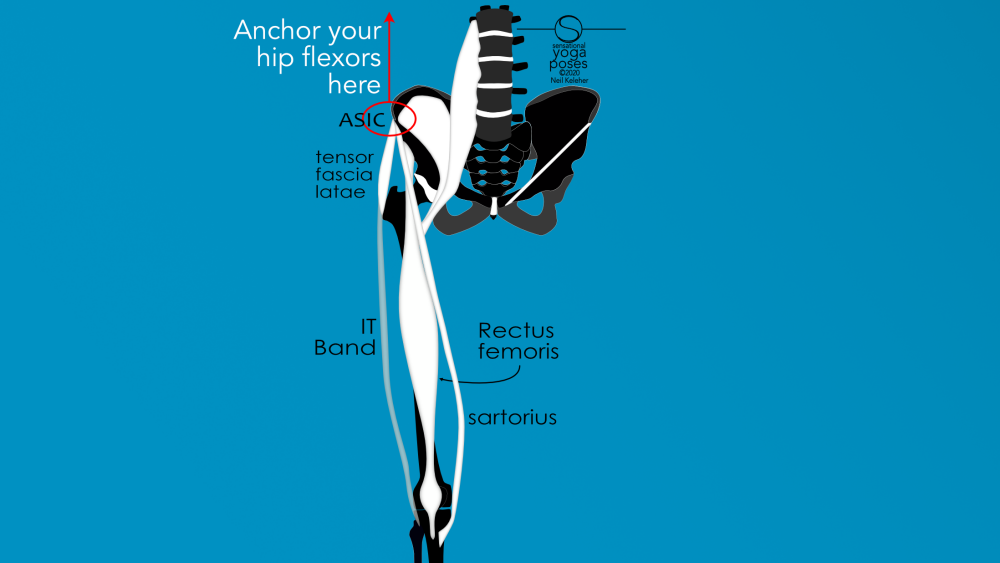Strengthening the hip flexors without using weights
Knees over toes guy has a range of exercises for exercising the hip flexors. Alas, a lot of them use weights. I was thinking to myself what might be a good way to exercise the hip flexors that doesn't use weight.
My initial thought was straight leg situps. While there is some hip flexor strengthening, it's not as much as I first thought. While the hip flexors are used in that exercise, they mainly stabilize the hip bones.
In a straight leg situp, at least in the initial stages, the exercise mainly involves flexing the spine forwards. And then, once you've sat up, unless you consciously keep the hip flexors activated, it's relatively easy to let them relax.
Another option is to do a straight leg situp and smoothly transition into a forward bend. However, to get the hip flexors to work, you'd need to activate the hamstrings to provide enough opposition.
Another option is the supine leg lift.
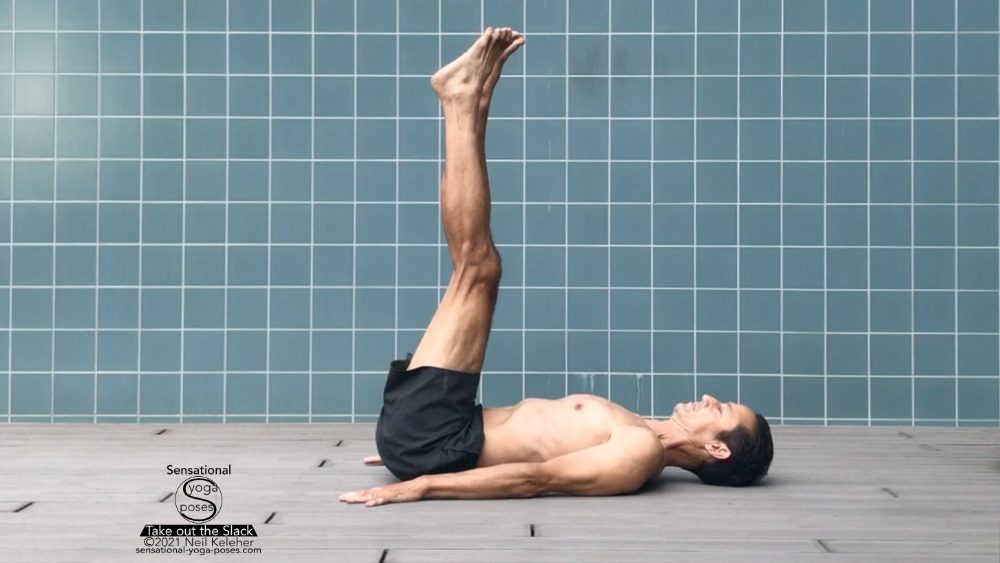
Starting position
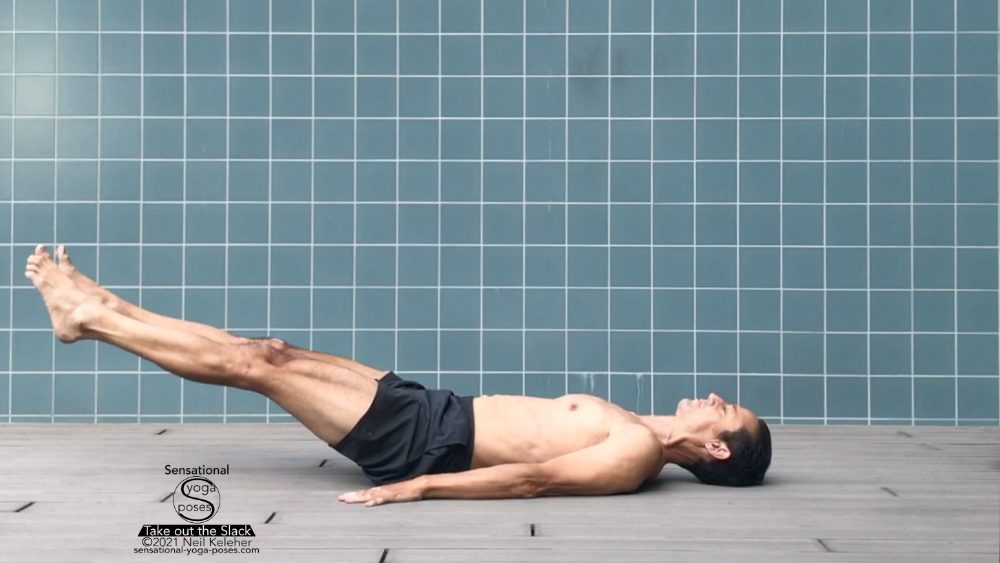
Lowering the legs
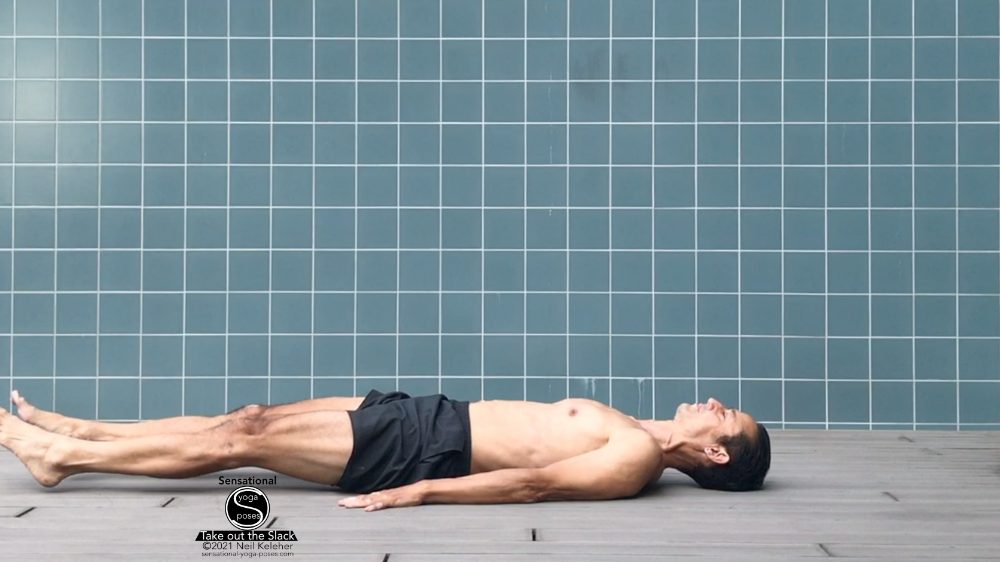
Bottom position, legs and hips still active, heels just above the ground
How to avoid lower back pain in the supine leg lift
One reason that I'm doing an article devoted to this exercise is that it can cause back pain while doing it. At least that's what I experienced.
What I found was that if I focused on keeping my lumbar spine flat, i.e. preventing it from arching, then towards the bottom of the movement, as my legs approached the floor, I got some sharp prickly sensations around my lumbar spine. I thought that this wasn't a good thing and so stopped.
After some thought I tried the exercise again. I was still going lowering my legs and lifting them slowly and smoothly, but the thing that I did differently was allowing my lumbar spine to arch off of the floor as I lowered my legs. Then as I lifted my legs, I allowed my lumbar spine to flatten.
When lowering my legs, the amount of arching or bending wasn't a lot. What I was doing was allowing my lumbar spine to bend "naturally" rather than trying to resist it moving.
I found that this option didn't cause any pain and so that's one of the ways that I do straight leg leg lifts.
Activating the transverse abdominis prior to lowering the legs
There are several muscle control options you can play with that don't involve keeping the lower back pressed flat to the floor as you lower your legs.
One of those is pulling the belly back to the spine, thus engaging the transverse abdominus. You may find that if you do this with your legs lifted, where your abs aren't bearing weight, that this is fairly easy to do. However, as you lower your legs you'll probably find that you can't keep your belly pulled in. I'll suggest here that creating that inwards pull and trying to maintain it even if your belly doesn't pull in will still keep the transverse abdominis is engaged.
Even without transverse abdominis engagement, if you lower your legs slowly and in control, your abs will automatically engage, working against the weight of your legs.
If they don't engage and you find your lower back arching severely, to the point of discomfort, then do work at engaging your transverse abdominis, and only lower your legs as long as you can maintain that engagement.
Why lumbar lordosis is okay when lowering the legs
So why might allowing the lumbar spine to bend off of the floor be a good thing?
Leg extensions and the lumbar spine
Doing standing leg extensions with one leg, or even doing something like extending a let while in cat pose, we can lift the leg higher by tilting the hip bone forwards, at the same time increasing the back bend of the lumbar spine.
For standing leg lifts, I generally teach students to back bend the lumbar spine first (at the same time translating the ribcage forwards relative to the ribcage). From there the idea is to increase the activation of the lumbar spinal erectors. And then from there the idea is to lift one leg backwards. to lift it higher, the idea can be to increase the forward tilt of the pelvis and thus the extension of the lumbar spine.
Restricting lumbar extension to focus on hip extension
Note that if your hip extension is severely limited, then you might choose to try to prevent lumbar extension so that you can focus on stretching the front of the hip.
In this case, you might choose to counter-nutate the hip bone so that the sitting bone of the extending leg moves inwards. You may find this aids hip extension.
You could also try counter-nutating just to notice the difference, moving the sitting bone moves outwards.
Another option is to alternate between nutation and counter-nutation when extending the hip. Then, on any given day, use the option that seems to be working the best.
Sequencing options for combined hip and lumbar extension extension
If you choose not to isolate the hips, then you can work on extending the lumbar spine and then extending the hip or vice versa. You could add nutation or counter nutation if you choose.
How does this relate to leg lifts?
Reducing lumbar shear forces when moving towards hip extension
In a supine leg lift, as you lower your legs, you are actually moving the hips towards hip extension. Since the hips are moving towards extension, especially near the bottom of the movement, it can make sense to allow the lumbar spine to extend a slight amount.
When you lower the legs, you are basically lengthening the psoas.
The lower you lower the legs the more you stretch the psoas. However, it's not a passive stretch. The psoas may be active and helping to support the weight of your legs. As a result it creates a pulling force on the front of the lumbar spine. This could result in a shearing like effect on the lumbar spine.
The simple way around this is to allow the hip bones to gradually tilt forwards as you lower your legs, at the same time allowing your lumbar spine to extend or "bend backwards".
This slight forward tilt of the pelvis along with the bending of the lumbar spine can help reduce psoas induced lumbar shear.
Note that in the leg lift in particular, the closer your legs get to horizontal, the greater the moment arm.
What this translates to is a feeling of greater weight. Your legs will feel heavier and require greater force to keep them supported.
This means your psoas is being stretched but is also exerting a greater force on the lumbar spine.
So this tilting forwards and extension of the lumbar spine potentially becomes more important the closer your legs get to the floor.
By tilting the hips forwards, and allowing the lumbar spine to come off of the floor, you actually reduce the stretch on the psoas. That in turn reduces the pull on the front of the lumbar spine.
A tip for keeping your lumbar spine flat to the floor
If you feel that you should maintain a flat or close to flat lumbar spine while lowering your legs, one way to do that is to exert a strong "upward" pull on your ASICs.
In this case, upwards means towards your ribs.
If you pull upwards on your ASICs,directing the pull towards your front ribs, you'll be activating your external obliques. To also activate you rectus abdominus, create an upwards pull on your pubic bone.
In either case you are helping to anchor the hip flexors that attach to these points. If anchored sufficiently well, these muscles can activate and help to bear some of the weight of the legs. This then helps to reduce the load that the psoas is bearing thus reducing the shear force is creates on the front of the lumbar spine.
Reducing psoas load
Note that you can these activations even if you aren't trying to keep your lumbar spine flat to the floor. Prior to lowering your legs, create an upward pull on the ASICs and pubic bone. Then maintain that pull while lowering and lifting your legs.
Here again the rationale is that by doing so we reduce load on the psoas. We thus reduce shearing forces on the front of the lumbar spine.
Reducing psoas load with the help of the transverse abdominis
You could combine these actions with transverse abdominis activation.
When pulling your transverse abdominis inwards, generate an upwards pull on your ASICs and pubic bone. Maintain these engagements while lowering and lifting your legs.
Activating the knees to help reduce low back stress
Something else that may be helpful to reduce low back stress is to strongly engage your knees. This can help in anchoring those same muscles, the tensor fascia latae and sartorius in particular, from below.
With legs vertical, activate your knees. Then keep them active while lowering and lifting your legs.
You also could try combining knee activation with creating an upwards pull on the ASICs and pubic bone.
In any of these cases, activate with the legs vertical. Then maintain the activation while lowering your legs and lifting them. Rest at the top. Then reactivate for the next rep.
The differences between leg lifts and straight leg situps
Note one interesting point about leg lifts is in comparison to straight leg situps. Why is it that we can curl our body off of the floor in one instance and lift our legs in the other?
The simple answer is leverage.
In a straight leg situp, we can activate hips, knees, feet and abs and from there lift our head and upper back off of the floor. The unified mass of our legs and hips (and even our arms reaching forwards) helps our body act as an anchor so that we can lift our head and upper body.
With a leg lift, our upper body, including head, ribcage and hips act as an anchor and so we can lift our legs instead.
Note for the straight leg situp it is the stiffening of the legs and hips (and abs) beforehand that allows us to lift head and ribcage and from there to situp.
Why bring this up?
Why understanding the difference beween leg lifts and straight leg situps is helpful
The better we are at controlling our joints and muscles, the easier it can be to get our body to do different things from the same starting position. One way to gain some understanding of how joints and muscles can be used in different combinations to create different movements is to study and do movements like the straight leg situp and supine leg lifts.
Published: 2021 11 03

